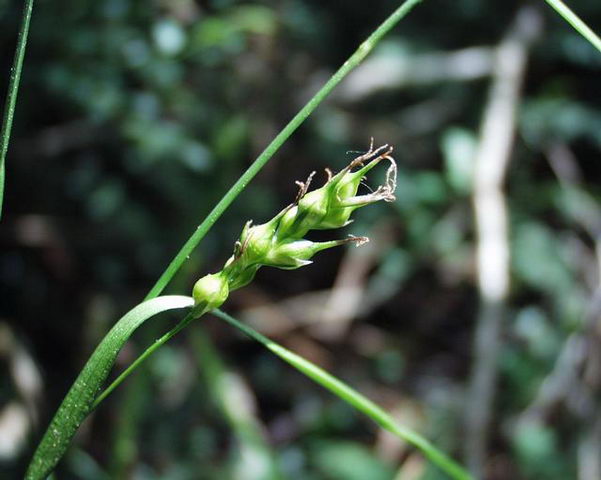Carex depauperata: Red Data Book of Armenia

EN* B 1 ab(iii) + 2 ab(iii)
Category. Endangered species. The extent of occurrence and the area of occupancy are less than 10 km2. Since the greater part of the population is situated beyond the borders of Armenia, the category of threat has been downgraded to EN. It was not included in the first edition of the Red Data Book of Armenia. It is not included in the Annexes of CITES and that of the Bern Convention.
Description. Densely cespitose perennial plants 15–30 cm. Leaves tender, 2–4 mm broad, shorter than stem. Spikelets 1–2; female ones 1–1,5 cm long, male ones 2–3 cm long. Bracts shorter than utricules, with green midrib and white squamose margins. Utricules 7–8 mm long, shiny, obtuse–triquetrous, with distinct veins; rostellum 3 mm long, from the front deeply, from behind slightly bidentate.
Distribution. It occurs in Idjevan (Bagratashen) and Zangezur (Nerkin Hand, Srashen, Tsav) floristic regions. AOO is 8 km2. The number of locations is 2, the distance between which is 280 km. The general area of distribution includes Central and South Europe, West Ciscaucasia, Dagestan, almost the whole of Transcaucasia, North–East Anatolia.
Ecological, biological and phytocoenological peculiarities. Grows in lower mountain belt, at the altitudes of 445–900 meters above sea level, in the forest. Flowering in June, fruiting in July.
Limiting factors. Loss/degradation of habitats caused by economical activities and deforestation.
Conservation actions. The greater part of the population is situated in "Shikahogh" State Reserve. Necessary: survey on population numbers and range, search of new habitats, monitoring of the state of the population.
Suggestions
 The Ministry of Environment sent a letter international partners to draw their attention to the real danger of environmental disasters as a result of Azerbaijan's large-scale aggression towards the territory of Armenia
The Ministry of Environment sent a letter international partners to draw their attention to the real danger of environmental disasters as a result of Azerbaijan's large-scale aggression towards the territory of Armenia
 Vicia pisiformis: Red Data Book of Armenia
Vicia pisiformis: Red Data Book of Armenia
 Vavilovia formosa: Red Data Book of Armenia
Vavilovia formosa: Red Data Book of Armenia
 Trigonella capitata: Red Data Book of Armenia
Trigonella capitata: Red Data Book of Armenia
 Trigonella astroides: Red Data Book of Armenia
Trigonella astroides: Red Data Book of Armenia












